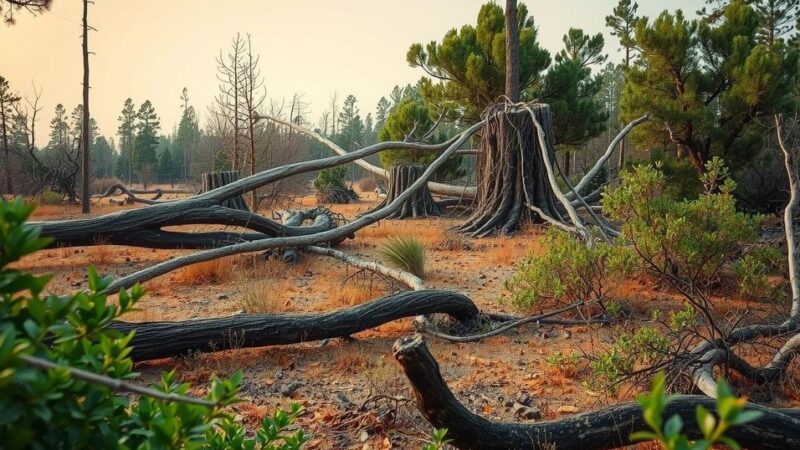The report reveals that many major cities are facing ‘climate whiplash’, with 95 percent showing trends toward wetter or drier weather. This shift endangers water supplies, sanitation, and food security. Notable cities affected include Nairobi, Los Angeles, and those in South Asia and the U.S. Urgent adaptation measures are needed to combat these extreme climate changes.
A new report highlights the impact of climate change on urban centers worldwide, revealing that many cities are experiencing “climate whiplash,” characterized by severe shifts from wet to dry conditions or vice versa. Commissioned by WaterAid, it analyzes climate patterns over the last 40 years in the 100 most populous cities. A concerning 95 percent of these cities are showing notable shifts toward either wetter or drier weather, which poses risks to clean water access, sanitation, food security, and community stability.
With over 4.4 billion people residing in cities, the growing population pressures water supply, sewage management, and flood defenses. Existing infrastructure struggles to cope with these changes, and constructing new facilities becomes increasingly challenging due to the unpredictable climate. According to Professor Katerina Michaelides from the University of Bristol, the results indicate that climate change impacts vary significantly across regions. For instance, Europe and parts of the U.S. are experiencing drier conditions, while cities in South Asia are facing extreme rains and flooding.
The report indicates over 20 percent of cities are witnessing a significant reversal in climate extremes, leading to more precipitation or droughts. Warmer air exacerbates these extremes by absorbing moisture during dry spells and releasing it during heavy rainfall. Cities like Cairo, Madrid, and Riyadh illustrate the sharpest climate fluctuations, while Hong Kong ranks among them.
Prolonged droughts can result in critical water shortages and food supply disruptions, exemplified by Brazil’s severe drought last year. Conversely, floods can contaminate water supplies and devastate agriculture and infrastructure. Cities grappling with climate whiplash face dual threats. In Nairobi, Kenya, for example, residents endured severe drought before intense rains caused flash floods, leading to loss of life and livelihoods.
Los Angeles also experienced devastating wildfires due to climatic fluctuations. A wet period led to an abundance of vegetation that, during subsequent dry spells, ignited into deadly wildfires. Both Nairobi and Los Angeles are part of a group of 15 percent of cities affected by climate whiplash, which further includes Baghdad, Bangkok, Melbourne, Jakarta, and Hangzhou. Such rapid climatic shifts hinder preparation and recovery efforts, significantly impacting residents’ quality of life and economic stability.
In summary, the increasing phenomenon of climate whiplash presents a critical challenge for urban centers worldwide. As cities face both severe droughts and intense rainfall, the risks to water supply, food security, and infrastructure become pronounced. This underscores the urgent need for cities to adapt to these unpredictable climate patterns to safeguard residents’ wellbeing and the sustainability of urban environments.
Original Source: macaonews.org






